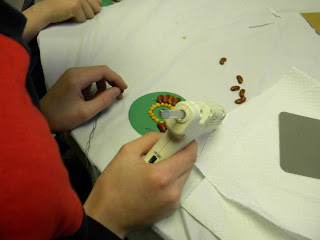November 11 - “ Glowing memory” class was a way of remembering and celebrating the Remembrance Day and Martinmas by making the symbols of light – candles. We started our circle with lighting the candles – the same ones we would make later, and talking about both celebrations.

Martinmas feast coincides with the end of the period of All Souls when the souls of ancestors were worshiped, and with the end of harvest-time, and winter preparations, including the butchering of animals. (An old English saying is "His Martinmas will come as it does to every hog”, it means "everyone must die".)
So Martinmas in the agricultural calendar marks the beginning of the natural winter, but in the economic calendar it is seen as the end of autumn. In some parts of Europe, children make their own lantern and go door to door with the lantern, and sing St. Martin songs, in exchange for sweets.
Remembrance Day (also known as Poppy Day, Armistice Day and Veterans Day) is a memorial day observed in Commonwealth countries since the end of World War I to remember the members of their armed forces who have died in the line of duty.
Remembrance Day is observed on 11 November to recall the official end of World War I on that date in 1918.
The red remembrance poppy has become a familiar emblem of Remembrance Day due to the poem "In Flanders Fields” which we recited in class.
First candle project was dipped candles. The hall was full of honey fragrance with wax melting on the stove. We had four dipping cans on the table and a long line of kids with wicks in their hands going around that table in a slow stately motion.



Candles were decorated with small shells when still warm.

Other two projects were examples of molded candles. One was a sand candle – we made some toy molds in a bowls with sand and poured hot wax in.


For the last one we put crushed ice in small juice cartons, placing in the middle thin dipped candle as a base. This project would show at home, when the ice totally melts.



And those are all three almost finished projects:






















































